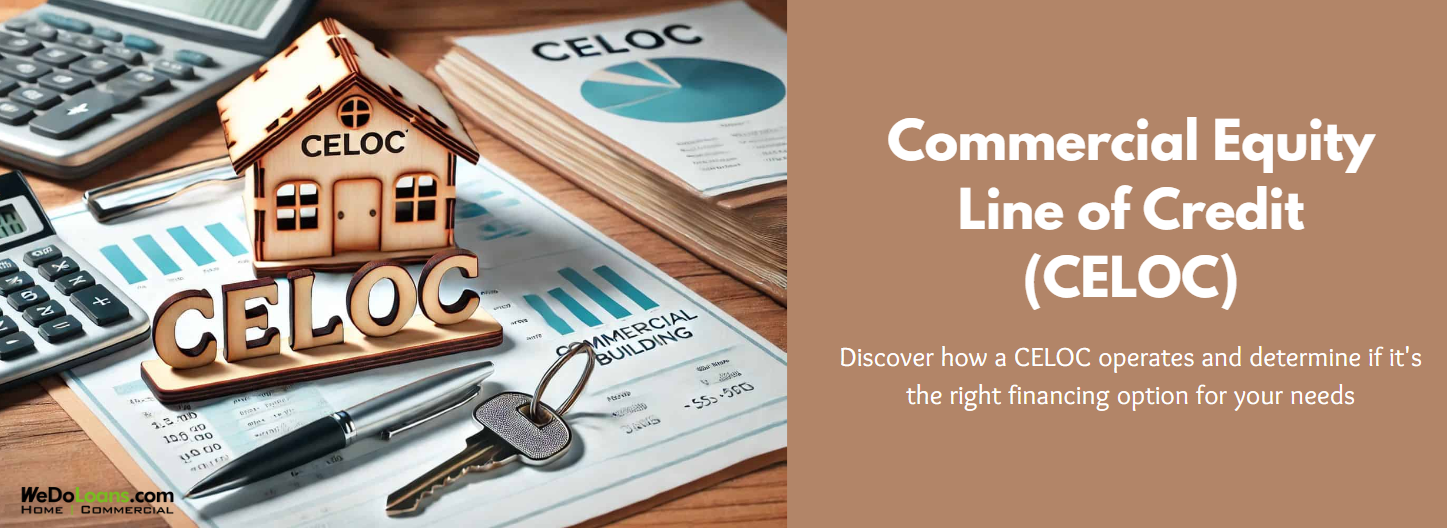
Commercial real estate investors often have access to various financing options when acquiring a property, but there are times when additional capital is needed after the purchase is complete. A Commercial Equity Line of Credit (CELOC) allows investors to use the equity in their property to secure flexible, on-demand financing.
Understanding the Commercial Equity Line of Credit (CELOC)
A CELOC is a type of financing that enables property owners to access funds based on the equity they’ve built in a commercial property. This credit line works similarly to a revolving credit card, where borrowers can withdraw funds as needed, repay them, and borrow again, all within a predetermined credit limit.
Much like a home equity line of credit (HELOC), the CELOC is tied to a commercial property rather than a personal residence. Due to the generally higher value of commercial real estate, the available credit limit is usually significantly larger than that of personal credit lines. CELOC funds can be used for a variety of business expenses, including renovations, equipment purchases, and working capital.
Although a CELOC is similar to a commercial equity loan, the primary difference is in how the funds are disbursed. With a CELOC, borrowers can draw and repay as needed, while a commercial equity loan provides the entire borrowed amount upfront in a lump sum.
How Does a CELOC Work?
A CELOC uses the equity in a commercial property as collateral. After assessing the property’s value, the lender sets a maximum credit limit based on the amount of equity minus any existing debt. This maximum credit can then be accessed as needed, with interest only charged on the actual amount borrowed, making it a flexible and potentially more affordable solution for businesses.
Typical CELOC agreements allow for a loan-to-value ratio of 70-75%, and terms often range from 5 to 10 years.
Types of Properties Used as Collateral for CELOC
Lenders typically accept a wide range of commercial properties as collateral for CELOCs. These can include office buildings, retail spaces, industrial properties, multi-family residences, and even undeveloped land. However, the property must have sufficient equity and be in at least acceptable condition.
Advantages and Disadvantages of a CELOC
As with any financial tool, CELOCs come with both benefits and drawbacks.
Advantages include:
- Flexible financing: Borrow and repay as needed within the set credit limit, making it useful for fluctuating cash flow needs.
- Interest savings: Interest is only charged on the amount drawn, reducing overall costs if full funds are not required.
- Broad usage: Funds can be used for various business expenses, including renovations, equipment, and working capital.
- Lower interest rates: CELOCs generally have lower rates than unsecured loans or credit cards.
Disadvantages include:
- Risk of foreclosure: Since the loan is secured by property, failure to repay could result in foreclosure.
- Variable interest rates: Rates fluctuate based on market conditions, which can make it difficult to predict costs.
- Higher rates than traditional loans: Although lower than unsecured loans, CELOC rates may be higher than those for conventional business loans.
- Additional fees: Appraisal, origination, annual fees, and potential prepayment penalties can add to the overall cost.
Costs Associated with a CELOC
While a CELOC offers convenient access to funds, it’s important to account for associated fees, such as appraisal costs, loan origination fees, annual charges, and prepayment penalties. Additionally, interest rates are often variable, which could lead to changing repayment amounts over time.
When a CELOC is Suitable
A CELOC can be an excellent option for businesses with substantial equity in their commercial property and the need for flexible financing. It is commonly used for expansion, equipment purchases, renovations, or managing cash flow. However, for smaller projects or purchases, a business line of credit may be a more appropriate alternative.
Conclusion
A Commercial Equity Line of Credit provides a flexible and competitive financing solution for businesses with equity in their properties. It’s worth considering whether this is the right choice based on your specific financial needs.
